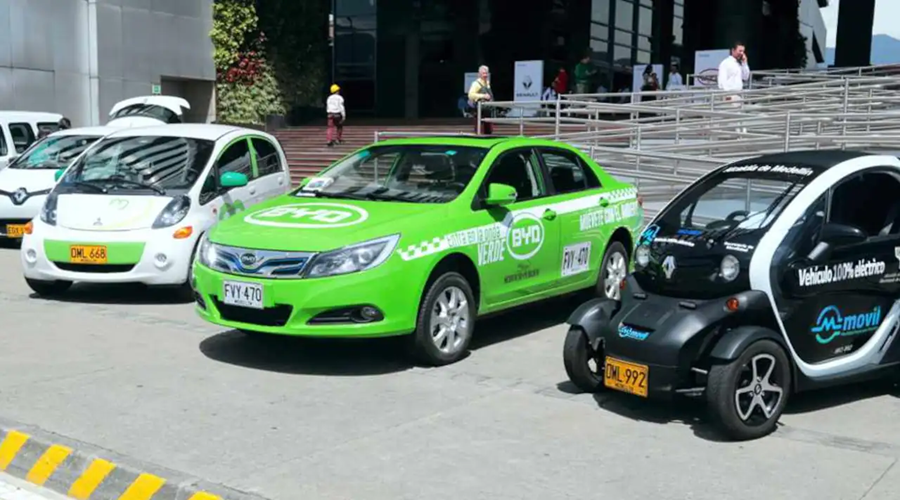The numbers speak for themselves: 1,986 electric vehicles were sold in Medellín so far this year, yet the city has just over 20 operational charging stations.
Despite this, the capital of Antioquia is cementing its role as one of Colombia’s key electric mobility hubs.
According to updated data from ANDEMOS, the city registered 1,986 electric vehicles in the first four months of the year, up from 1,285 in the same period in 2024.
This represents year-on-year growth of over 54%, with Medellín maintaining the highest per capita EV penetration nationwide, surpassing Bogotá.
However, this progress has not been accompanied by a matching expansion of charging infrastructure. Currently, Medellín has just over 20 public charging stations in operation — a figure that stands in sharp contrast to the surge in registrations.
In October last year, Mobility Portal Latinoamérica spoke with Mateo González Benítez, Medellín’s Secretary of Mobility, who affirmed that “expanding the district’s charging network for electric vehicles” is a priority for the new administration.
The interview took place during the early months of the current local government and outlined a roadmap including agreements with public utility company EPM, technical consultancy work, and plans to develop a metropolitan charging network.
Charging Stations Lacking Integration and Expansion
The main local operator, Empresas Públicas de Medellín (EPM), manages 22 charging points, mostly located in shopping centres and strategic areas.
The latest addition, launched in April at El Tesoro shopping centre, features 7.4 kW and 22 kW chargers accessible via app or bank cards.
This network is supplemented by eight additional stations listed on the collaborative platform Electromaps, including Tienda Matiz, E.S. ESSO Los Álamos and the Éxito Colombia car park.
However, most of these points are low power and lack integration with payment platforms.
E-Mobility on Hold? No Confirmed Dates or Contracts
The Mobility Secretariat had announced a roadmap for designing a metropolitan network, with the support of EPM and expert consultants.
The plan envisioned stations at the city’s entrances and exits, intermunicipal links, and key nodes within the Aburrá Valley Metropolitan Area.
As of April 2025, no concrete progress has been published. No annual targets or implementation schedules have been announced either.
When consulted by Mobility Portal Latinoamérica, the Secretariat stated that timelines would depend on the outcome of the ongoing technical consultancy.
Energy Security and Interoperability: Ongoing Challenges
Another key focus identified by the city government is the need to ensure energy security in the face of rising electricity demand.
According to Secretary Mateo González Benítez, the aim is to “ensure the infrastructure is available for users and that the country can meet the energy demand required for this type of transport.”
Bogotá as a Benchmark: More Operators and an Active Private Network
In comparison, Bogotá registered 8,765 new electric vehicles during the same period, a 63.7% increase. Its growth is underpinned by a stronger network, active private sector involvement, and clear fiscal incentive policies and urban expansion plans.
Colombia’s capital has more public and private stations, located in terminals, transport hubs, supermarkets and high-traffic areas. Several operators offer integrated payment platforms and ensure charger interoperability, making the user experience smoother and helping scale up the EV ecosystem.
What’s Next for Medellín and E-Mobility?
In parallel, the local government has proposed the creation of a Special Fund to electrify public transport, aiming to finance both infrastructure and incentives for fleets and users.
In addition, the Mobility Secretariat is promoting national-level fiscal proposals, such as scrapping VAT and import duties on electric vehicles and charging equipment.
“Eliminating VAT on electric vehicles would be an effective initiative — it would significantly lower costs and make them more accessible,” González Benítez said.
National Coordination as a Structural Pillar
Medellín’s administration maintains that sustainable transformation depends on alignment with the national government.
“We can develop a network for Medellín and its metropolitan area, but we need coordinated expansion at the national level,” the Secretary added.







